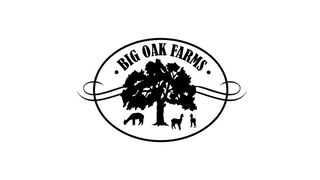The Results are in! All weights are in US lbs.
| Rank | Read more...
Tuesday, November 28, 2023
2022 September Fall Festival
A great time was had with lots of interactive activities for the little ones. Thanks Wendel's Nursurey for hosting this years event!
Friday, August 25, 2023
When to Wean
Read more... Short answer: 60 lbs or 6 months. Although, you may see them imitate their herd mates grazing in the pasture. A cria's rumen is not fully functioning until 3-4 months of age. There are 3 methods used in weaning Cria from their respective mothers.
Saturday, May 20, 2023
Birthing Notes
Read more... Dams should gain 25lbs over their pregnancy. Some have gained on a rare occasion as much as 40lbs.
Monday, September 5, 2022
Alpaca Care Tips
Read more... Tips from the Pro's ( Not necessarily from us ) just things we have heard or learned along the way.
Monday, May 2, 2022
Sorting and Grading Alpaca Fiber; The Long and the Short of it.
Read more... Alpacas are ARI registered and we breed huacaya alpacas with the goal of upgrading their fiber quality. Alpaca fiber can also be sent away for testing, a histogram is available upon request.
Tuesday, April 26, 2022
What is Crimp in Alpaca Fiber?
Read more... Funny how the simplest things can sometimes elude you when you search for them on the internet. This one was driving me crazy. I just wanted to see a picture of what "Quality" "Crimp" looked like in an Alpaca's fleece as opposed to "Not So" quality "Crimp".
Thursday, April 21, 2022
What makes Alpaca so Special?
Read more... Many fall in love with alpacas because they very cute, gentle and have such loveable personalities. Once the animals have won over hearts, the new-to-alpacas person will eventually ask, “What are they used for?” This note is a short review of the many wonderful qualities of alpaca fiber.
Thursday, April 21, 2022
How to Care for Alpaca Products
Read more... Congratulations on your purchase of a fine alpaca product!
Friday, April 8, 2022
Alpaca Sounds
Read more... Let’s review the various types of alpaca sounds:
Monday, April 4, 2022
Do Dryer Balls Actually Work?
Read more...
Saturday, April 2, 2022
Alpaca Vocabulary Terms
Read more... Agist- When an alpaca owner lets his/her animal live at someone else’s farm, this is called “boarding” or “agisting.”
Wednesday, March 30, 2022
Alpaca Q&A
Read more...
Tuesday, March 29, 2022
Choke in Alpacas
Read more... The first time you witness "choke" it can be a bit intimidating. For us, we had just changed feed to a smaller extruded pellet. We feed in troughs roughly 21 inches off the ground but we did not spread the feed out in the trough. Classic mismanagement, this lead to the alpacas feed being "clumped in piles" which in turn allowed them to grab a large mouth full of feed and swallow it repeatedly. Alpacas have a dental pad on the roof of their mouth, they do not chew food as much as swallow it wh
Thursday, March 10, 2022
All About Alpaca Fiber
Read more... What makes Alpaca fiber so amazing?
Friday, January 21, 2022
10 Fast Facts about Alpacas
Read more... 1. It has been estimated that alpacas are 30% more efficient grazers than sheep.
Friday, January 21, 2022
Meningeal Worm Intro, Prevention and Treatment
Read more... Meningeal Worm Introduction: Proud Member ofGreat Lakes Alpaca Association |
